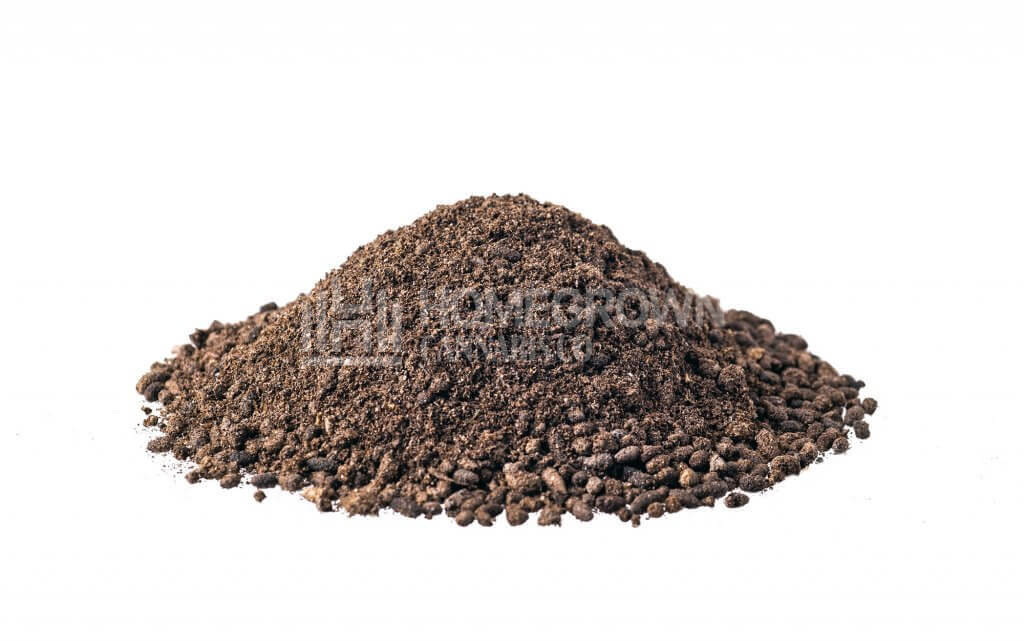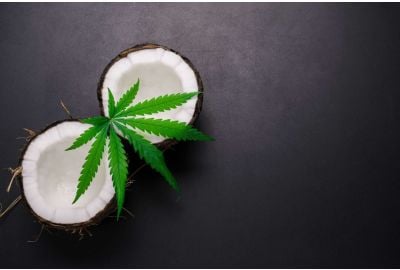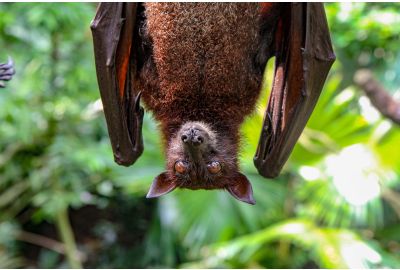What Is & How To Use Bat Guano Fertilizer
It's not often that a person can consider dung to be gold, but in the case of bat guano, for marijuana growers it is. Filled with a host of macro and micronutrients, it packs a punch when it comes to boosting the health, quality, and growth of cannabis plants.
Bat guano also changes the strain's flavor when used with other fertilizers, giving it a stronger and bolder taste. The various types of guano available, with varying amounts of NPK, determine at which stage cultivators should use the nutrient-rich booster.
If you're asking yourself, what is bat guano used for, or if you're not sure how it's beneficial to marijuana cultivation, then read on.

What is bat guano
The word guano is a generic name for bird or bat excretions that can be 1 minute or 1 million years old. Bats don't need much introduction, they play a vital role in the ecosystems of their habitats. They control insect populations and help pollinate various plants.
Our interest lies in the gold that they poop out. Bat guano is the fecal matter that they excrete and then it builds up on the floors of their roosting caves. It composts slowly and, during the process, develops high levels of nutrients which are crucial to plant life.
The various species of bats worldwide have varying diets, so the type of guano they produce differs between regions. Some are coast-dwelling while others are land-bound, which means the type of fruits they eat are different and, in turn, the levels of NPK.
How does bat guano look and smell
Bat excretions, also known as guano, are small dark-colored pellets. The elongated droppings are crumbly and turn to dust when prodded. They also look a bit like a rugby ball and are often sparkly or glittery.
To answer the question of what does bat guano smell like: it's musty and has an aroma a lot like ammonia combined with urine. You might have a bat infestation in your home, and you wouldn't even know it as the odor develops slowly over time as the guano decomposes.
Bat guano vs seabird guano
When shopping for bat guano organic fertilizer, you'll find different types of dung products available on the shelves. The most common would be bat droppings, but seabird guano is also readily available. Even though these products appear to be similar, there are some substantial differences.
It is rich in NPK's while in seabirds, the composition varies and has higher nitrogen, phosphorus, and calcium levels. This difference is mainly due to the bird's high protein fish-based diets. Bats, on the other hand, feast on fruit and insects.
Bats that eat more fruit tend to have droppings with higher phosphorus levels, while bats that eat more insects produce guano with higher nitrogen levels. The weather and changing seasons have a huge effect on the NPK levels of guanos. As weather patterns and seasons change, both birds and bats have to eat what is available. Due to this, the concentration of NPK varies.

Is bat guano a good fertilizer?
Bat guano is teeming with nutrients and can support marijuana plants through the vegetative and flowering stages. It's organic, so when used correctly, it will enhance the substrate and promote microbial life.
It's a great fertilizer and promotes better soil texture, it aids the healthier decomposition of organic material in the ground. Anyone growing cannabis should consider guano a one-stop-shop for strong, healthy crops.
What are the benefits of bat guano?
Its fertilizers have many uses besides just boosting the nutrient content of your marijuana crops. The droppings can improve the earth in your garden and be used as lawn treatment or a soil cleanser. The decomposition of the microbes within the dung serves as a fungicide and a nematicide. It also works as a compost activator.
The guano is effective when made into a tea and used to water cannabis plants. The mixture supplements and stimulates the growth of flowers, herbs, vegetables, and fruits.
Besides the nutritional benefits of it, there are other pros to using it for your cannabis plants. In combination with other fertilizers, the guano will give you better flavor quality and increase your plants' resistance to insects and disease.
Bat guano fertilizer dangers
Even though there are numerous benefits to using bat guano as a fertilizer, there are also a few dangers that you need to know about. When it accumulates, it initiates the growth of histoplasmosis fungus. This fungus causes severe respiratory problems in humans.
It's important to wear protective face masks when working with the substrate. You also need to take care when using guano for your plants, don't overfeed them as it may cause nutrient burn and hamper their growth and development.
Bat guano uses: what is bat guano good for
Bat guano is useful for fertilizing and feeding the soil, but it also has other uses:
- Improves richness and texture of the soil
- Used as lawn treatment to promote growth
- Useful as a soil cleanser through its bioremediation microbes which clean up toxic residues
- Acts as a natural fungicide
- Controls nematodes through decomposition of microbes
- Expedites the composting processes

Is bat guano good for cannabis plants?
Marijuana plants, like all other cultivated crops, need nutrients to survive. It has both macro and micronutrients that are vital for the healthy growth and development of plants. The different types of guano available from the various species of bats mean that there is a vast range in nutritional value.
Growers of cannabis can choose specific bat guano for the seedling, flowering, and veg stages. Using the dung means less time spent worrying about the nutrition deficiencies of your crops.
Let’s take a closer look at these nutrients:
What macronutrients can be found in bat guano?
To get your cannabis plants to grow to optimal levels, the plant needs a certain amount of macronutrients. The most important for marijuana plants are nitrogen, phosphorus, and potassium, which it has. The NPK constitution is at a ratio of 10–3–1. It translates to 10% nitrogen, 3% phosphorus, and 1% potassium composition.
The levels vary between the guana available in different parts of the world depending on what the bats eat. Nitrogen is crucial to the formation of chlorophyll and amino acids. The compound ensures the healthy maturation of the plant that appears above the soil.
Phosphorus is an essential element that promotes healthy resin production and ensures sturdy root growth. It is also vital for photosynthesis. The bacteria and mold resistance booster is potassium which plays an important role in how the plant uses air and light. It also helps to strengthen branches and stems.
Even though the macronutrients are crucial for every phase of plant growth, different stages require different combinations of NPK and in varying amounts. Bat guano is very high in nitrogen which is ideal during the vegetative stage. If the guano is abundant in phosphorus, then it's better used for flowering.
What micronutrients can be found in bat guano?
Besides macronutrients, cannabis plants also require an array of micronutrients to survive and thrive. Even though they need less of these substances, they are just as important as the primary NPKs. The micros help the marijuana plant carry out essential physiological functions ranging from photosynthesis to cell wall building.
Below, we explore some of the micronutrients found in bat guano and their benefits.
- Boron: This element promotes cell wall production, the cohesion of cell membranes, and the movement of sugars to developing sections of plants.
- Calcium: It plays an important role in response to biotic stress caused by pathogens. It also plays a key role in the structural development of cell membranes and walls.
- Iron: This element contributes to chlorophyll production, the green pigment that helps convert light to sugar within the marijuana plant.
- Manganese: This metal is important in streamlining several biological systems within the plant. It includes the way nitrogen is used, the photosynthesis process, respiration, and root cell health.
- Zinc and sulfur: These two elements play an important role in protein building and the activation of crucial enzymes.
- Magnesium: The compound sits at the center of the chlorophyll molecule. Without this precious metal, the plant wouldn't have the structural functionality to conduct photosynthesis.
Bat guano for the flowering stage
When growers use bat guano for the flowering stage of cannabis cultivation, it generates long-lasting and bolder tastes and terpenes. Many cultivators enjoy the smooth flavors that are brought on by using guano as a fertilizer.
The high phosphorus levels are an excellent way to boost greater flowering. It promotes the thicker branch development to support the heavier buds and can deliver gorgeous chunky white pistils.

When and how do you use bat guano for cannabis?
Bat guano is easy to use in the two most common forms. The first is powdered guano which is ideal for a top dressing or easily mixed into a solid recipe. The powder can also be added to cold water or aerated compost extract and applied to the plants.
The second technique is to make a bat guano tea that you then spray onto the foliage or apply to the roots of the bushes. Even though ready-to-use versions are available at stores, making your extracts from scratch gives your plants more benefits than store-bought ones.
Since bat guano liquid fertilizer is so rich in nutrients, using too much too early can cause a nutrient burn. Use it sparingly and only after the plants have passed the seedling phase. Some companies produce guano specifically designed for the various growth stages.
Bat guano that's high in nitrogen is conducive to improved leaf development during the vegetative stage. You can check the packet and buy fertilizer with NPK values of 8-1-1 or 7-3-1. For the flowering stage, it's best to use a mixture rich in phosphorus. Look for NPK values of 0-10-0 and 0-12-0 for this stage to promote bigger and healthier bud formation.
Bat guano tea recipe
The easiest way to introduce bat guano for cannabis is using a liquid method.
Try our bat guano tea recipe for flowering for an efficient way of introducing the material to your marijuana crops. It doesn't require any special tools or complicated instructions.
Tools:
- Bucket
- Bat guano
- Stirring instrument
- Face mask
- Empty spray bottle
Ingredients:
- One tablespoon of bat guano
- 33 fl. oz of warm water (non-chlorinated)
Instructions:
- Add the droppings to the water while stirring
- Let it stand overnight
- Apply the mixture directly to the plants
- For root application, spray the liquid to the root area and water properly to enhance absorption
- To apply to leaves and foliage, use a fine mist sprayer before dusk or at dawn
How much bat guano do you need per gallon of water?
For a standard bat guano tea recipe, you need about one cup of dung per gallon of water. An important fact to keep in mind is that bat guano can cause disease in people with compromised immune systems and damage lung health. Remember always to wear a mask when mixing guano with water.
How long does it take for bat guano to break down?
Due to the complex composition of bat guano, it can take up to two weeks before the plants can use it. You can speed this process up by using a catalyst or enzyme to help break down the dung.

The nutritional gold that is bat guano
It's a well-known fact that grass-fed animal dung is beneficial to use as fertilizer. Bat guano is especially useful as the bats eat various fruit and insects, which creates a nutritionally packed excrement ideal for cannabis crops.
Any seeds you get at a dispensary such as Homegrown Cannabis Co will benefit from bat guano fertilizer by using it as a tea spray or top dressing. Make sure that you research the different types of guano available so you can buy the correct one to use for the growing stage of your crops.
For more tips on optimizing your cannabis crops and finding out about the various strains, subscribe to our newsletter, join the Homegrown Forum, or follow us on our social media channels.
About the author: Parker Curtis
Parker Curtis has around a decade of cannabis-growing experience, specialising in soil-less and hydro grows. He’s mastering outdoor, greenhouse, and indoor grows.


